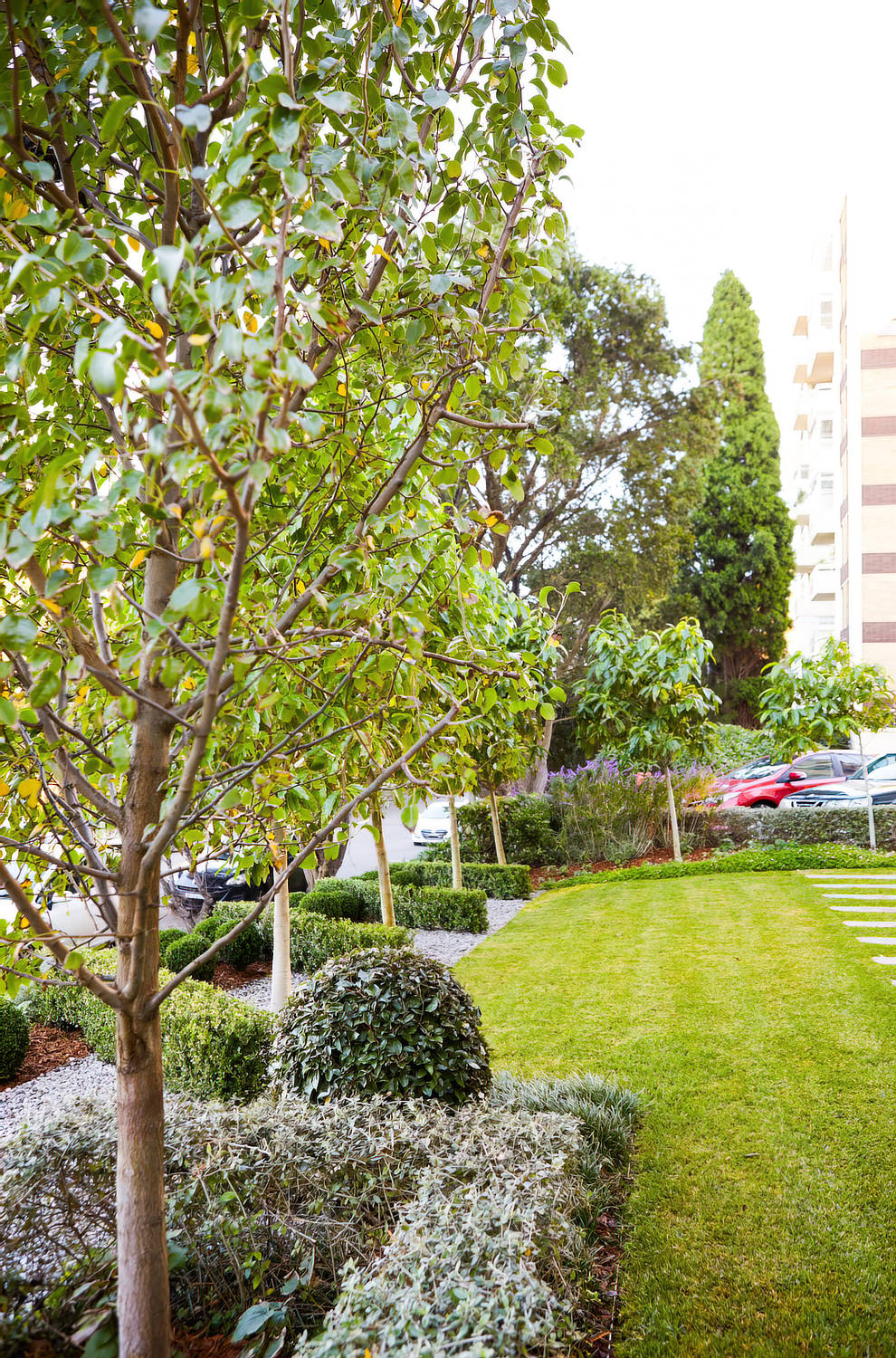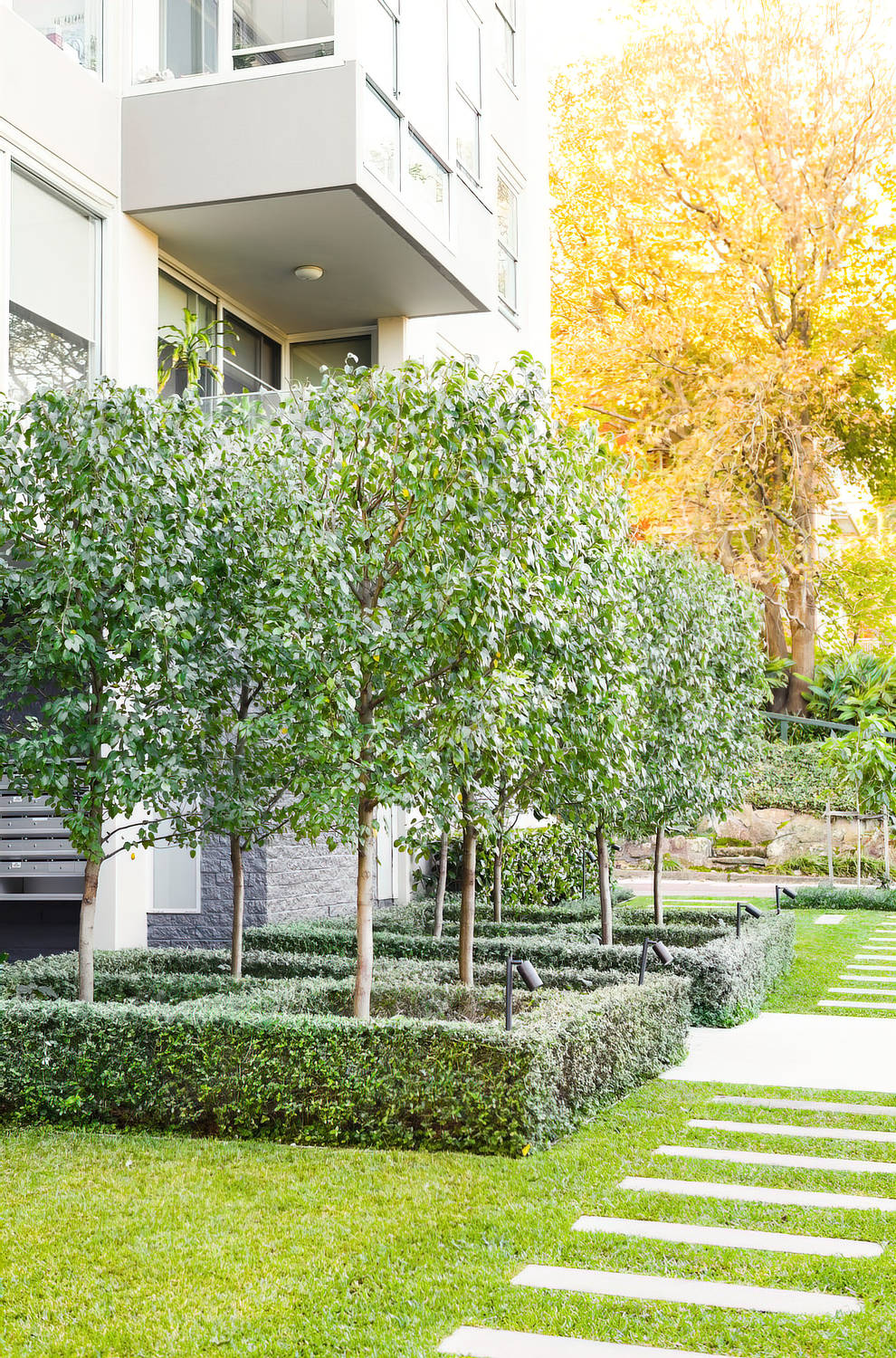I love the old adage ‘the best time to plant a tree was 20 years ago, then next best time is now. I personally love planting trees, they add instant impact to a space but at the same time hold so much potential for improving an area over time as they mature.
The addition of a tree to the garden or landscape can be one of the most important decisions you make when planning a garden, get it wrong and you’re up for a costly mistake not only in the expense but in the whole feel of you garden.
If you want something fool proof, hardy, suitable for pool soil, sculptural and edible you can’t go past the olive tree. This tree will start to bear fruit from four to five years old and will not only tolerate but thrive in poor dry soils. Olives make a great hedge as well as a standout feature tree, if you are using one as a centre piece I suggest spending some money on an old one as they have wizened gnarled bark that add character and interest to the garden.
The crepe myrtle is my go-to small garden feature tree as I feel it does it all. Amazing flowers in the heat of summer, right around the Christmas break, bright red deciduous autumn foliage colour that allows light in during winter where it can show off its salmon-coloured bark and of course the fresh new growth in spring. This tree is reliable in all types of soil and only gets better the hotter it gets. It can be left to create its own shape or can have a pollard prune every year to maintain a small size perfect for courtyards.
If autumnal colour is what you are after then the Chinese pistachio is one of the best for warmer autumns and winters, it seems to go a scarlet red no matter the temperature drop. It can also tolerate a variety of soil types and temperatures which is why it’s a popular street tree. You should know it is a medium sized tree that will get to 7-8 meters even 12 meters in the right conditions so plant accordingly.
The red flowering gum is a native that when in bloom is a real treat but you can bring that amazing flower into the garden with one of the dwarf varieties such as Corymibia ficifolia “Dwarf Orange” or the pink “Little Sweetie”. As well as being adaptable to most climates and soil this native will also attract birds and butterflies to the garden.
Pomegranates are similar to olives in their usage, an unusual but excellent hedging plant in green rather than the silver of the olive, beware it is deciduous so can be used to divide a space but shouldn’t be relied upon to screen. Like the olive the pomegranate thrives on poor soil and heat and will bear spectacular fruit that even if you don’t like the taste look like Christmas decorations in the garden. These trees also get better with age so look for twisted and character filled trunks.
Other trees that should get a mention include the native water gum Tristaniopsis laurina ‘Luscious’, a designer tree with a near perfect conical shape, white trunk yet black stems bearing glossy green leaves and a yellow flower. The Chanticleer pear, perfect for the formal garden and for tight spots due to its upright habit, Zelkova serrata a majestic large tree with deep green foliage and a stunning vase shape, only for the big garden but a show stopper none the less. For a wet garden with some room the Tuleupo or Nyssa sylvatica will supply the best autumn colour and for a drier spot the Jacaranda will bloom its head off in a cloud of purple. Of course, there are many more excellent trees for many a variety of aspects and soil types so consider all options before bringing a tree into your life.


